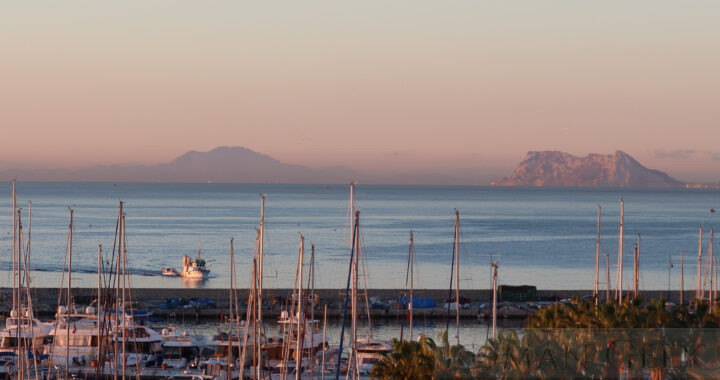- Eratosthenes (c.275-194 BCE) associated the Pillars of Hercules with the Strait of Gibraltar, with the Rock of Gibraltar on one side and Jebel Musa near Ceuta on the other.
- Prior to Eratosthenes, ancient Greek writers placed the Pillars of Hercules on the Strait of Sicily between Sicily and Tunisia.
Greek Mythology
- In Greek Mythology they were created by Hercules whilst travelling to the Garden of Hesperides, as one of the Twelve Labours of Hercules. Instead of climbing the Atlas Mountains, he divided them, and connected the Atlantic with the Mediterranean Sea.
Plato
- Plato stated that the lost empire of Atlantis was located beyond the Pillars of Hercules.
‘Non Plus Ultra’ and ‘Plus Ultra’
- The Pillars were said by Renaissance historians to have had a message engraved upon them: ‘Non Plus Ultra’ meaning ‘Nothing further beyond’.
- The Spanish King Charles V created his coat of arms depicting the Pillars of Hercules with the words ‘Plus Ultra’ meaning ‘Further Beyond’, in defiance of the old myth.
- The Spanish Dollar also depicted the Pillars of Hercules as two vertical columns.
- It is thought that the two vertical lines in the the American Dollar sign, originate from the Spanish Dollar, and therefore themselves depict the Pillars of Hercules.
The Temple of Hercules, Cadiz
- Strabo described two bronze pillars eight cubits high in the Temple and states that they represented the true Pillars of Hercules.
- This was located on an island adjacent to Cadiz and contained great wealth.
- The Temple was visited by Hannibal before he invaded Italy, and later by Julius Caesar.
- In 49 BCE Varro removed its wealth to nearby Cadiz.
Temple of Melqart, Tyre
- Hercules was Melqart to the Phoenicians and Carthaginians.
- The Temple of Melqart in Tyre was considered to be one of the most important temples in the ancient world.
- Herodotus (c.484-c.420 BCE) wrote that he saw two columns in this temple, one made of pure gold and the other of an emerald stone that shone at night.
Strait of Gibraltar

